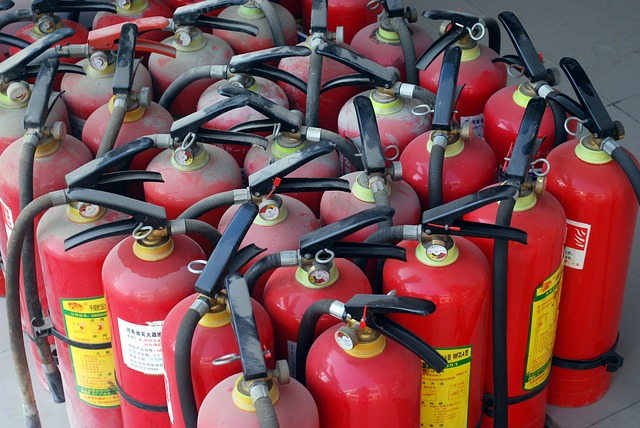Maximize Protection: Strategic Fire Extinguisher Locations and Safety Measures for Your Property
Ensuring fire safety on your property is not just about compliance but protecting lives, assets, and operations. For business and building owners, understanding the strategic placement of fire extinguishers and implementing robust safety measures can make all the difference in an emergency. This blog post will guide you through optimizing fire extinguisher locations, utilizing Advanced Fire Audit Software, and elevating your fire preparedness.
Why Fire Safety Matters for Business and Building Owners
Fire safety is a critical concern for any commercial property. The fire risks are numerous, ranging from accidental ignition to electrical faults. Proper fire safety measures reduce these risks significantly. Business and building owners must prioritize this to safeguard their personnel and assets. A single incident can cause catastrophic damage, both financially and reputationally.
Understanding Different Types of Fire Extinguishers
Knowing the types of fire extinguishers is essential. Each type is designed for specific kinds of fires. For instance, Class A extinguishers target ordinary combustibles like wood and paper. Class B extinguishers are for flammable liquids such as oil and gasoline. Electrical fires, categorized under Class C, require special extinguishers that do not conduct electricity. Ensure you have the right type for each potential fire hazard on your property.
Strategic Placement of Fire Extinguishers
Placement is crucial for fire extinguishers to be effective. They should be easily accessible and visible. The National Fire Protection Association (NFPA) recommends placing them near exits and escape routes. This ensures they are reachable during an emergency. Additionally, extinguishers should be placed at regular intervals in large areas. This minimizes the distance anyone must travel to reach one.
High-Risk Areas Needing Extinguishers
Identify high-risk areas in your building. Kitchens, workshops, and storage rooms often pose higher fire risks. Ensure these areas have appropriate fire extinguishers. Machinery rooms and areas with a high concentration of electrical equipment are also critical. Always ensure that the extinguishers are easy to reach and unobstructed.
Regular Maintenance and Inspections
Regular maintenance of fire extinguishers is non-negotiable. Check extinguishers monthly to ensure they are in good working condition. Annual professional inspections are also necessary. These inspections verify the extinguisher’s functionality and compliance with safety regulations. Neglecting maintenance can result in extinguishers failing when needed most.
Training Employees on Fire Safety
Employee training is vital to fire safety. Conduct regular fire drills and training sessions. These should include instructions on how to use fire extinguishers effectively. Employees should also know the evacuation routes and procedures. Well-trained staff can react quickly and efficiently in a fire, reducing potential damage and injuries.
Implementing a Fire Safety Plan
Developing a comprehensive fire safety plan is essential. This plan should outline all procedures for preventing and responding to fires, incorporating fire inspection software to streamline the process. It should also include details on fire extinguisher locations and maintenance schedules. The plan should be regularly reviewed and updated to address any new risks or changes in the building layout.
Ensuring Clear Signage and Accessibility
Signage is critical to fire safety. Marked evacuation routes and fire extinguisher locations help in emergencies. Ensure signage is visible and understandable by everyone in the building. Accessibility is equally important. Ensure all paths to extinguishers and exits are free of obstructions. This can save crucial time during an emergency.
Integrating Fire Alarms and Detection Systems
Fire alarms and detection systems are your first line of defense. Ensure your building is equipped with state-of-the-art fire detection technology. Regular testing and maintenance of these systems are crucial. Integration of alarms with other safety measures enhances overall preparedness.
Collaborating with Local Fire Departments
Building a relationship with your local fire department can be beneficial. They can provide valuable insights and assistance in enhancing your fire safety measures. They may also offer training sessions and inspections. Their expertise can help you identify potential fire hazards you might have overlooked.
The Role of Fire Safety Audits
Fire safety audits are comprehensive evaluations of your fire preparedness. Conduct these audits regularly to assess the effectiveness of your fire safety measures. Audits help identify areas for improvement and ensure compliance with legal requirements. Addressing the findings of these audits promptly enhances your overall fire safety.
Leveraging Technology for Fire Safety
Advanced fire detection and suppression systems can significantly enhance fire safety. Smart technology can provide real-time monitoring and alerts. Investing in such technologies ensures faster response times and minimizes damage during a fire.
Conclusion
Ensuring fire safety in commercial properties is a multifaceted task. Strategic placement of fire extinguishers, regular maintenance, employee training, and technology integration, including Advanced Fire Audit Software, is crucial. By implementing these measures, businesses and building owners can protect lives and assets effectively. Stay proactive, stay prepared, and prioritize fire safety every day.

